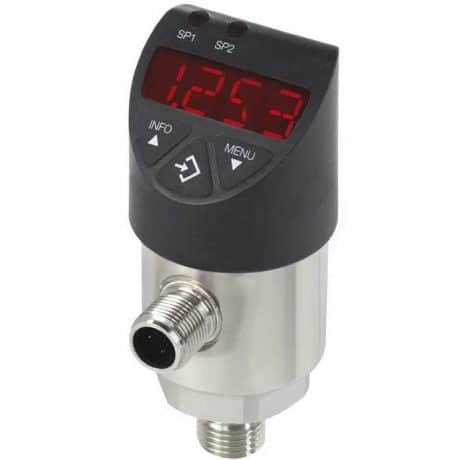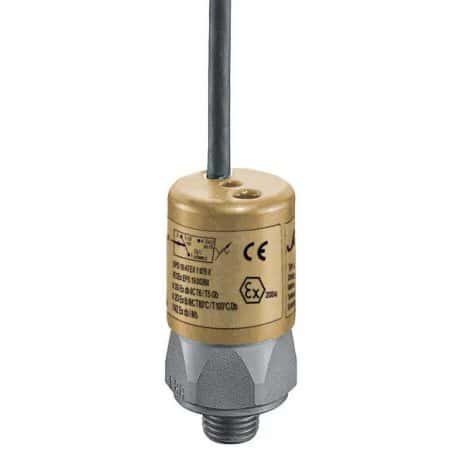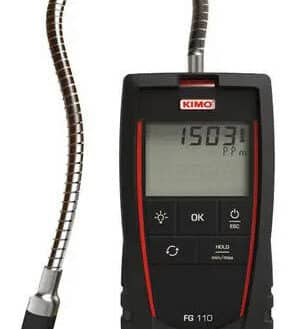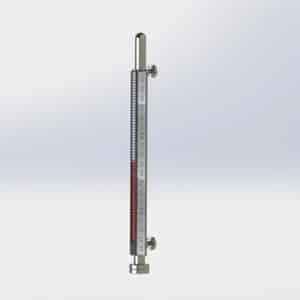
WIKA electronic pressure switch
Based on the type of technology used in their construction, pressure switches can be divided into two main categories: mechanical and electronic. Each of these technologies provides various options for switching signals and adjustments.
Mechanical pressure switches
Mechanical pressure switches convert fluid pressure into mechanical movement utilizing a diaphragm or piston which, when deformed or moved, triggers the switching contact. Mechanical pressure switches offer the advantage of operating without a power supply but are limited to generating only a switching signal.
They are simple and inexpensive devices, chosen more for their robustness than their precision. They are normally used to switch high currents (for example, to control pumps) or as redundant safety devices.
Mechanical pressure switches can feature either a fixed switching point, which is factory-set, or an adjustable one. However, hysteresis, also known as differential, is typically not adjustable on most models. Hysteresis refers to the difference between the pressure value set to trigger the pressure switch (switching point) and the value required to return it to the initial position.
Electronic pressure switches
Electronic pressure switches include an electronic pressure sensor that measures the pressure and generates an output signal when the switching points are reached. Electronic pressure switches are generally more complex and therefore more expensive than mechanical ones. They have no moving parts, which makes them more reliable and longer-lasting. They are also far more accurate than mechanical models.
Electronic pressure switches can be factory-set, but they usually have a digital display and an interface that allows you to easily program the various parameters of the device (timing, switching points, hysteresis, normally open or normally closed, etc.). The digital display also allows you to see the pressure value in real-time, as well as the status of the device’s contact (open or closed). These pressure switches therefore also function as pressure sensors/transmitters.
Electronic pressure switches can offer both the possibility of programming several switching points and a greater variety of output signals. They are more suitable for automatic systems than mechanical pressure switches.
Due to their many advantages, pressure switches are currently the most widely used in industrial process control.







